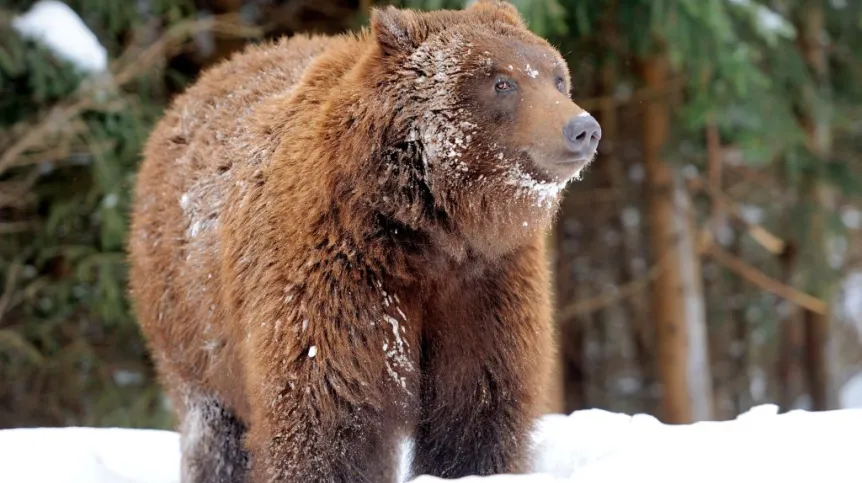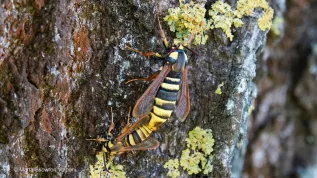
45 brown bears live in the entire Tatras, of which 15 animals are on the Polish side of the mountains, and 16 move seasonally between the two countries, show a detailed genetic studies conducted by researchers from Warsaw University of Life Sciences and the Tatra National Park.
PAP Dr. Zuzanna Nowak of the Department of Genetics and Animal Breeding, Faculty of Animal Sciences SGGW-WULS in Warsaw told PAP that genetic testing of Tatra bears started in 2012, and the analysis was completed this November.
"The results show that not that many bears permanently live in the Polish Tatras. Nevertheless, during the summer, their number doubles, as the bears prefer to be on our side of the mountains during the summer" - said Dr. Nowak.
During the study, naturalists and scientists observed a regularity in seasonal migration of bears: most spend the winter on the Slovak side, and between May and August more bears are on the Polish side. Since the autumn, researchers have observed the return of bears to the Slovak side of the Tatras.
"It is surprising that only some bears, mostly males +specialize+ in destroying beehives. Often a lot of damage on farms is causes by a single animal" - said Dr. Nowak.
According to the researchers, the study population of Tatra bears has a high genetic diversity. "It is a very positive factor, as it means that there is no kin mating, and so bears can +freely+ couple in pairs, and, as research shows, migrate long distances in search of not only food, but also a mate" - concluded Dr. Nowak.
Study of bears began with the collection of their hair, left in the so-called traps. Traps were special patches or wire wrapped around a tree with bait attracting bears. Predator, rubbing against such trap, would leave hair. Additional samples were collected from areas where bears caused damage, mostly from broken hives. Samples were collected over 12 months and subsequently delivered to the laboratory the Department of Genetics.
Dr. Nowak explained that in the laboratory researchers determined the genetic profile of the sample - like in forensic research, using the nucleus in the hair follicles. Later, researchers compared all the genetic profiles obtained from each of the more than 400 samples. After the analysis, they selected the repeating profiles, which came from the same animal. This way, they determined 45 unique genetic profiles, and the number of bears living in the Tatras.
Bears monitoring program, including genetic research, was funded by the "Milka together for the Tatras" project. "Monitoring of bears is needed, because the more we know about the habits of bears, the better we can protect these animals" - told PAP Filip Zięba of the Tatra National Park, expert on the Tatra fauna.
The largest mainstay of bears in Poland are Bieszczady. Every two years, female bear in a cave gives birth to one to three young, which remain in the care of their mother for a year and a half. Bears are omnivores, adult animals weigh about 300 kg and live up to 50 years
PAP - Science and Scholarship in Poland
szb/ mki/ mow/
tr. RL













